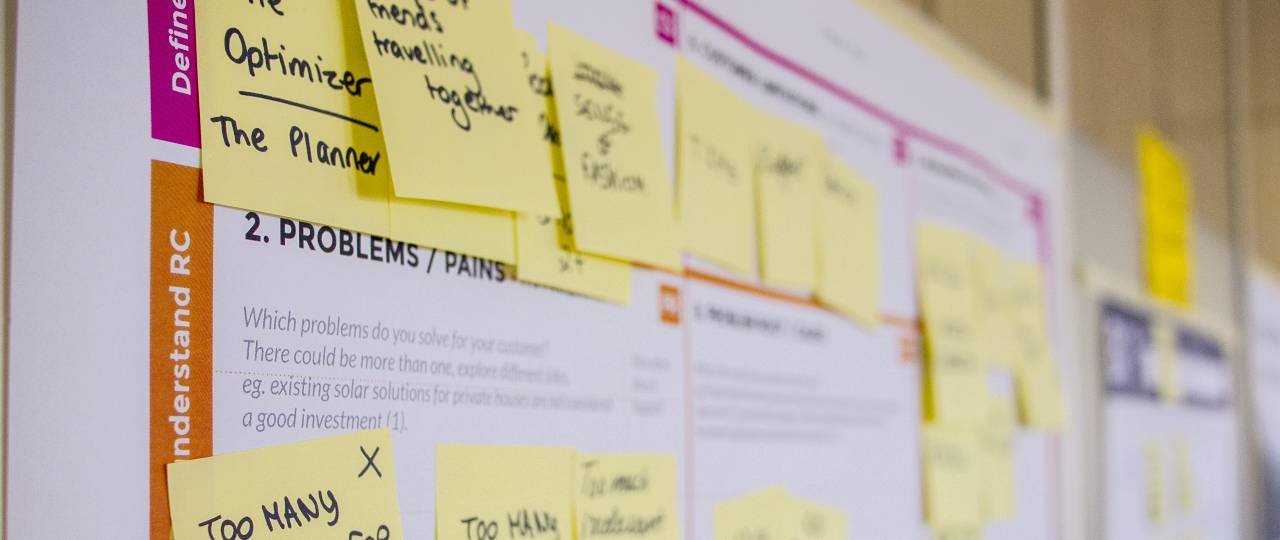Often there are problem areas for people where others see no problem at all. This is often found in corporations or institutions that are subject to a larger hierarchy.
It gets exciting when you, as a human centered designer, work with the part of people who don't currently see the problem. I call it “No Problem Problems”.
Let's assume…
... you are a sales representative, you perform well and achieve your goals year after year. Now comes a designer who talks to you in the form of an interview about your everyday work and at the end asks you specifically whether you have problems in your daily activities or whether you would like to improve. What do you think you answer?
Now let's assume…
... you are the head of the sales department. Together with strategy and management, you will work on the goals and strategy for the coming years. One of the main points is increasing B2B sales. So, as a department head, you have to find solutions to become faster, sell more, create new offerings, etc.
What now?
If we look at the situation from a higher perspective, there are two obvious solution spaces. We enable existing sales employees to achieve deals more quickly or we hire more sales employees. However, the latter is associated with high costs, a long training period and building trust with the customer.
If we choose the former, we as human centered designers have a challenge ahead of us, because the employee currently has no problem. He achieves his goals again and again.
How do we find starting points?
There are many methodologies to find new/additional design spaces, for example to increase performance. However, bluntly asking the sales representative what pains he has in his day-to-day business or what he needs is not very helpful at this point. He doesn't have any problems with what he's doing (yet).
Even with new, hip technologies or digital helpers, we won't knock down any open doors. Many of you know statements like:
- “No one else thinks he knows better…”
- “Not more technology, we will achieve and exceed our goal…
- “It doesn’t work in the end…”
- “Please let me do this the way I’ve always done it…”
- ...
Working with a methodical approach based on Human Centered Design can be a good starting point. However, human centered design is often thought of or described too superficially and simply. Using simple interviews or surveys in research will not find fertile ground here. Please note the supposed statements and answers from above.
How To?
The design team must necessarily delve very deeply into the subject matter of the people affected and their context in order to recognize and understand whether and, if so, what potential offers a starting point.
Contextual Inquiry:
In addition to conversations, interviews, etc., contextual inquiry offers the opportunity to build a deep understanding of the other person. Contextual inquiry is a type of ethnographic field study that involves in-depth observations of a small sample of users to gain an in-depth understanding of work practices and behaviors.
Staying with the in-depth example, this simply means that the design team becomes sales employees. In order to achieve this, the customer's everyday work is intensively observed both internally and externally.
Potential pain points will quickly arise for the design team, which can possibly be solved or at least accompanied by technology or digitalization.
In the example, the observations led to the realization that it is only at the time of an on-site visit within a municipality that it becomes clear what it might need or where its interests lie. Before that they are just perceptions, from what is spoken and heard.
Ideation with Design-Sprint:
With the “pain points” identified, ideation follows in human centered design. There is often no shortage of ideas. Especially on a green meadow. However, the ideas are often developed without the presence of the people for whom they are being designed.
In order to design together with the people affected, it is advisable to fully integrate them into idea generation and generate “How Might We” questions. In the example given, the question could be:
- “How might we manage to know what the customer is planning in the (near) future before visiting a customer?”
- “How might we manage to gain additional information to what we know from direct conversations with the customer?”
- “How might we manage to gain additional information to what we know from previous projects?”
- How might we manage to know what the customer wants before he knows it himself?
- ...
And lo and behold:
In the co-creation in the form of a design sprint, the information comes to light that there is extensive and freely accessible information about municipalities. But there is a lack of time to research and evaluate these. More sessions followed…
A first milestone has already been reached and an initial idea has been born. As a sales representative, I could become faster if I could use this information easily and without increased effort.
The question that remains is, would we have achieved this goal through simple interviews? Probably not, since the sales employees haven't seen any acute problems and don't know the department head's problems.
You can read how this approach leads to success in the project description: InSight




















